Transcription of Opioid conversion guide - Department of Health
1 Opioid conversion guide How to use the conversion guide February 2016 Why do we need an Opioid conversion guide ? There are many opioids and many formulations available ( tablets, patches, injections) Each Opioid medication binds to Opioid receptors differently Therefore, a different amount of each Opioid is needed to have the same analgesic effect Important considerations All Opioid conversions are a guide only Patients may vary in their response to the effects of different opioids Therefore, ongoing patient assessment is required after conversion for: effectiveness of pain relief; and toxicity; and adverse effects Equianalgesic dose Equianalgesic dose refers to: the dose of each Opioid needed to provide the same pain relief The dose is calculated by using a conversion factor Opioid dose multiplied or divided by factor = morphine dose Equianalgesic doses of oral opioids The guide is colour coded as a visual prompt.
2 GREEN shaded opioids are those STRONGER than morphine mg for mg PURPLE shaded opioids are those WEAKER than morphine mg for mg Calculating equianalgesic doses Oral Opioid conversion factor ( Opioid dose X or by factor = morphine dose) morphine oxycodone x If a patient is taking Oxycontin (that is, 15 mg oxycodone x 2 doses/day or 30 mg oxycodone/day) Then, 30 mg oxycodone/day x conversion factor = morphine/day 30 mg x = 45 mg morphine/day Calculating equianalgesic doses Oral Opioid conversion factor ( Opioid dose X or by factor = morphine dose) morphine oxycodone x If a patient is taking morphine and is to be changed to oxycodone then it is necessary to do the reverse calculation and divide the morphine dose by the conversion factor. That is, 30 mg morphine/day conversion factor = oxycodone/day 30 mg = 20 mg oxycodone/day Equianalgesic doses of oral opioids If a patient is taking Panadeine Forte 2 tablets qid that is, (2 x 30 mg codeine) x 4 doses or 240 mg codeine/day Then, 240 mg codeine/day conversion factor = morphine/day 240 mg 8 = 30 mg morphine/day Oral Opioid conversion factor ( Opioid dose X or by factor = morphine dose) morphine codeine 8 Practical equianalgesic doses Oral Opioid conversion factor ( Opioid dose X or by factor = morphine dose)
3 Practical equianalgesic dose morphine 10 mg oxycodone x mg* *Dose guided by strength of medication available Practical equianalgesic doses are listed Dose ranges are listed for medications where the equianalgesic dose is not practical in the formulations available mg oxycodone x = 10 mg morphine The dose prescribed will be guided by clinical decision making Practical equianalgesic doses Oral Opioid conversion factor ( Opioid dose X or by factor = morphine dose) Practical equianalgesic dose morphine 10 mg tapentadol 3 50 mg* tramadol 5 50 mg *Dose guided by strength of medication available The dose listed for tapentadol is determined by lowest strength of medication available (50 mg) Tapentadol is NOT the same strength as tramadol Methadone conversion factors have not been provided for methadone Methadone conversions are complicated Prescribing should be restricted to medical specialists with experience of methadone prescribing for pain management subcutaneous route conversions The conversion factor for oral to subcutaneous doses is used for calculating equivalent daily doses OR intermittent (or when required ) doses Equianalgesic doses are listed (as above) on the guide Opioid Oral dose Equianalgesic subcutaneous dose conversion factor (oral dose by factor = subcut dose) morphine 30 mg 10 mg 3 hydromorphone 6 mg 2 mg 3 Calculating subcutaneous doses Opioid Oral dose Equianalgesic subcutaneous dose conversion factor (oral dose by factor = subcut dose)
4 Morphine 30 mg 10 mg 3 hydromorphone 6 mg 2 mg 3 If a patient is taking MS Contin 30 mg bd that is, 30 mg oral morphine x 2 doses/day or 60 mg oral morphine/day Then, 60 mg oral morphine/day conversion factor = subcut morphine/day 60 mg 3 = 20 mg subcut/morphine/day Transdermal preparation conversions For transdermal preparations (patches) the equianalgesic oral morphine dose is listed for the lowest strength of each patch Opioid Patch strength Equianalgesic oral morphine dose buprenorphine 5 microgram/hr 12 mg/24 hrs fentanyl 12 microgram/hr 30-45 mg/24 hrs Sublingual preparation conversions Opioid Dose Equianalgesic oral morphine dose for pain buprenorphine tablet 200 microgram 8-16 mg For buprenorphine the equianalgesic dose of oral morphine is listed Sublingual preparation conversions Opioid Dose Equianalgesic oral morphine dose for pain fentanyl lozenge 200 microgram no direct conversion There is no direct conversion for fentanyl lozenge to other opioids including morphine The recommended initial dose of lozenge is 200 micrograms If pain is not relieved then the dose can be increased until effective
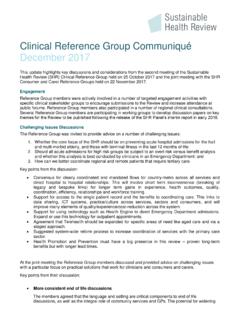
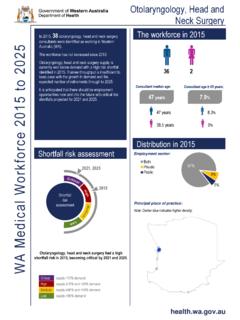
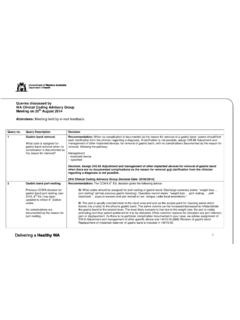
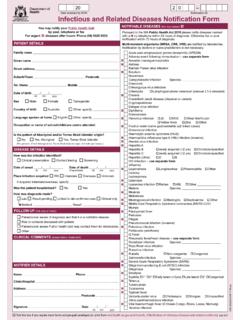
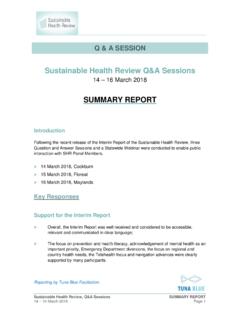
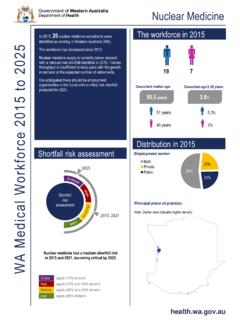

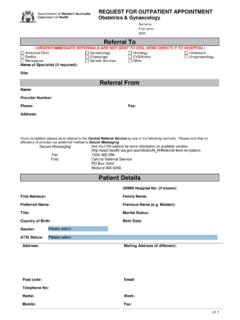

![[P] Fentanyl Subcutaneous & Nasal - Palliative Care (Adults)](/cache/preview/3/6/0/0/a/b/5/9/thumb-3600ab597c837bd6f4f240fa5200c14c.jpg)
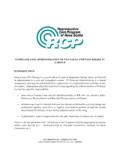
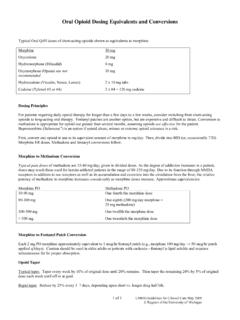
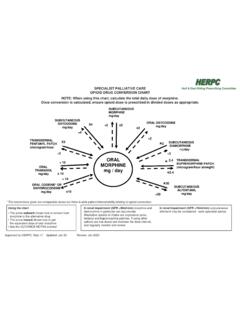
![[P] Midazolam - Palliative Care](/cache/preview/f/d/1/a/9/5/a/e/thumb-fd1a95aeebe3a3a2108377669a11cc07.jpg)